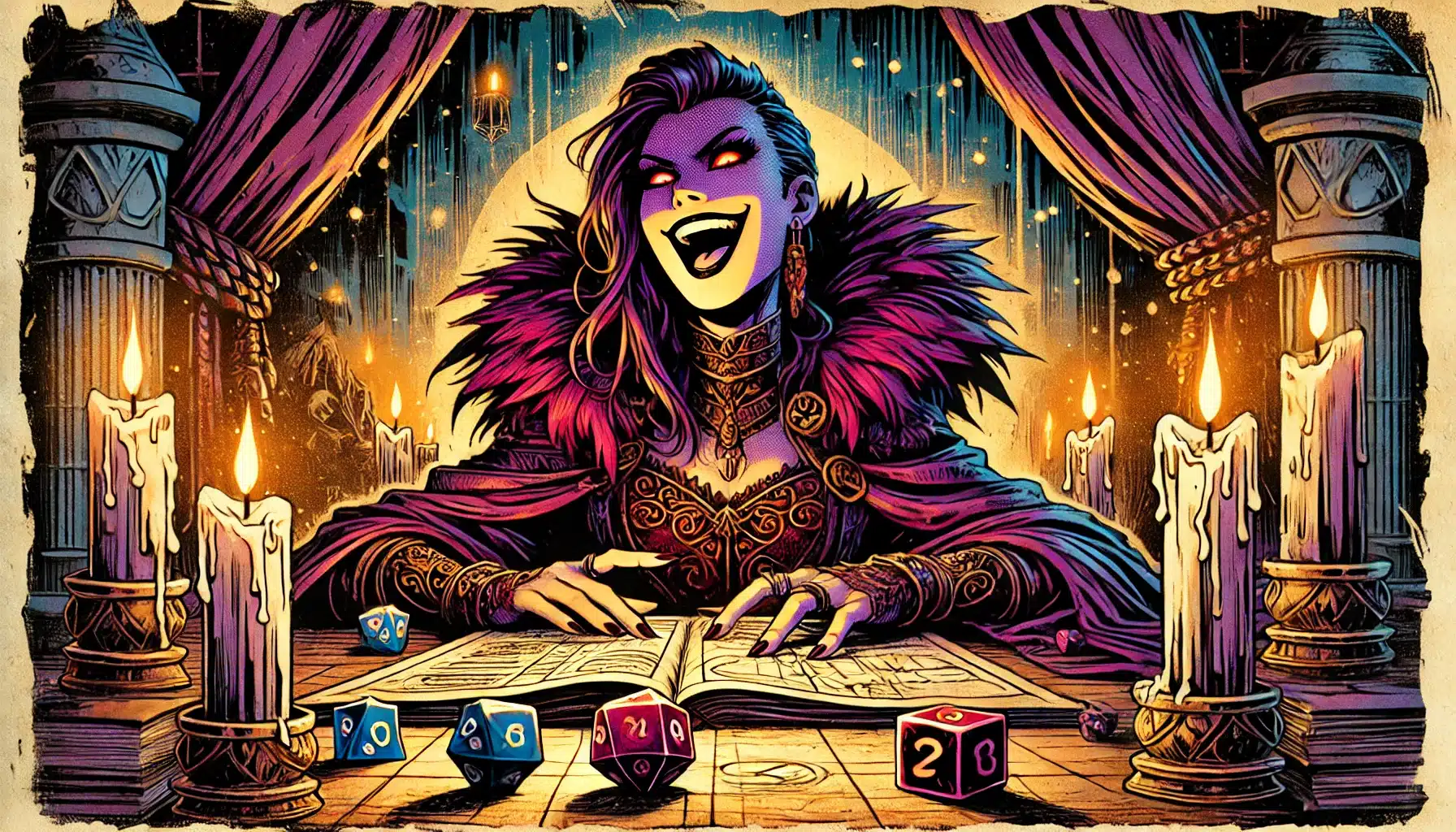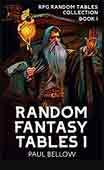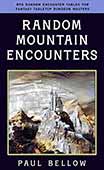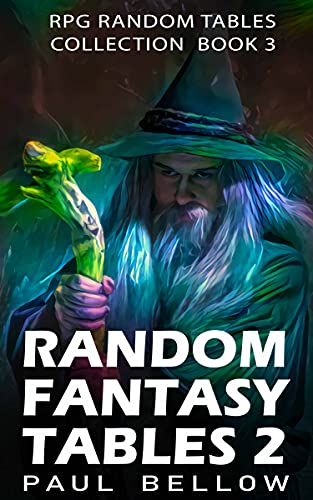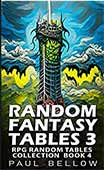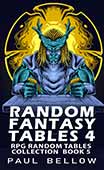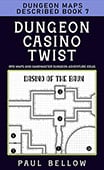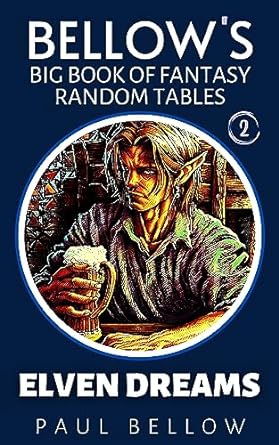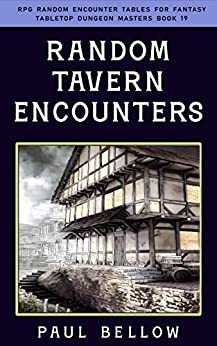Roleplaying evil characters in tabletop RPGs is a deliciously wicked challenge that entices gamers with the allure of moral depravity and the thrill of exploring the darker sides of a fictional universe. Who wouldn’t want to twirl an imaginary mustache and exclaim “Mwa-ha-ha!” once in a while? Yet, embodying the essence of evil without descending into chaotic disruption requires a deft balance. As you contemplate becoming the notorious villain everyone loves to hate, remember: the goal is to have fun at the table, both for you and your fellow players. An engaging evil character can add depth to a campaign, but a gratuitously malicious one can sour the experience for everyone.
The appeal of being the “bad guy” in an RPG is universal; after all, villains often have the best lines, the most outrageous plans, and the memorable fashion sense. However, it’s about more than just gleeful malevolence. As you weave your tale of wickedness, you’ll need to navigate the complex dance between enjoyable play and moral bankruptcy. Your character’s actions should provoke thought, drive the story forward, and provide entertainment—not just leave your fellow adventurers plotting your character’s demise.
Playing an evil character offers unique storytelling opportunities. It’s a chance to explore motivations that might not align with conventional heroism, such as power lust, revenge, or twisted ideologies. However, it’s crucial to keep the experience enjoyable and balanced. With the right approach, your evil character can become a fascinating and integral part of the campaign, challenging other players to grow and adapt without overshadowing their stories.
Ultimately, an evil character’s journey can enhance group dynamics, encouraging creative roleplaying and providing the party with thrilling moral dilemmas. The key is to ensure that your maleficence adds value to the narrative without veering into disruptive chaos. It’s about dancing on the edge of villainy without falling into the abyss of one-dimensional evil.
Understanding the Nature of Evil in RPGs
In the context of RPGs, a truly evil character goes beyond simplistic diabolical deeds. While some may define evil as the tendency to indulge in nefarious actions, true depth in an evil character comes from their motivations and the complexity of their moral compass. Evil in RPGs is less about “being bad” and more about layered motivations, such as seeking power, exacting revenge, or pursuing an ideological crusade that skews the lines between right and wrong.
Evil characters can embody various archetypes, from the misguided zealot to the power-hungry tyrant. Each has unique motivations. The best villains, however, are those whose motivations resonate with a sense of twisted logic or misunderstood morality. By exploring these complexities, a player can create an antagonist that adds depth and intrigue to the game, rather than simply serving as a chaotic disruptor.
Try my AI Tabletop RPG generators...and an extensive library of content!
The challenge lies in walking the fine line between being a compelling villain and a disruptive force. A character motivated solely by chaos can easily derail a game. Instead, consider what drives your character and how these motivations influence their interactions and decisions. A nuanced approach can transform your evil character from a potential game-breaker into a dynamic element that enhances the group’s storytelling experience.
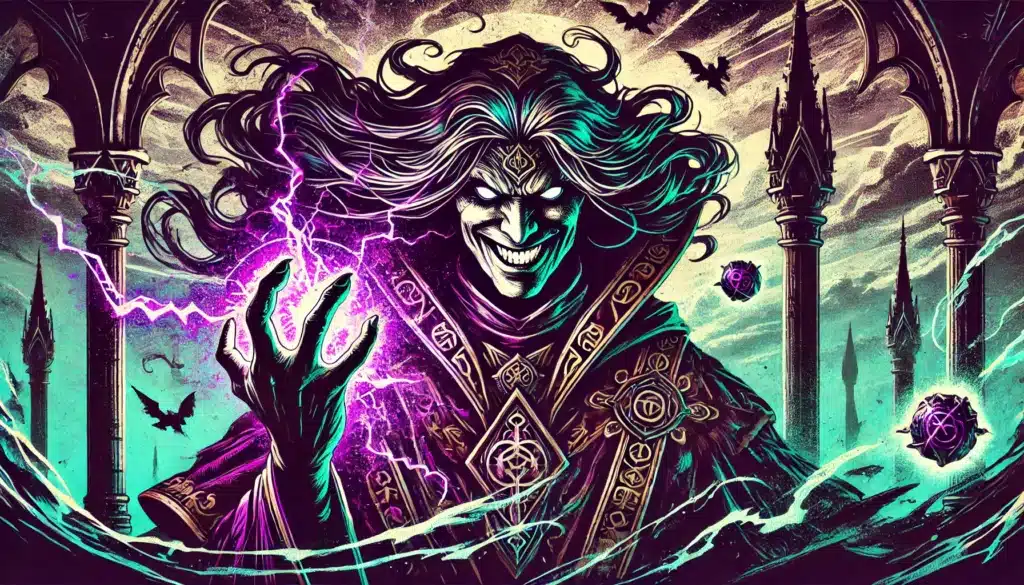
Crafting the Evil Backstory

Crafting a rich and believable backstory for your evil character is akin to concocting the perfect potion—it’s about the blend of ingredients. While common tropes can provide a useful starting point, such as a tragic past or a fateful betrayal, the magic lies in transforming these familiar elements into something unique. Perhaps your character’s path to villainy was sparked by a noble intent gone awry, or a misguided love lost to the annals of time.
To create depth, connect your character’s past to their present motivations and actions within the game. What events in their history have shaped their current desires? Use your backstory to provide insight into why your character makes the choices they do, enriching their role in the campaign and offering other players opportunities to engage with your story.
When developing your character’s backstory, it’s important to ensure that it adds depth without overshadowing the narratives of your fellow players. Your evil character’s past should serve as a foundation for interaction rather than dominating the scene. By doing so, you can weave your story within the larger tapestry of the campaign, allowing collaborative storytelling to flourish.
⚔️ Fantasy RPG Random Tables Books
Make life as a Gamemaster easier…
If you play Dungeons & Dragons, Pathfinder, or other fantasy RPGs, this
RPG random tables series
is packed with encounters, NPCs, treasure, and more. Available in eBook or print—either way, you’ll have a wealth of adventure ideas at your fingertips.
Remember, while your backstory’s primary role is to inform your character’s actions and decisions, it should also invite others to engage with and influence your character’s journey. Craft a backstory that encourages interaction and you’ll create an engaging experience for everyone at the table.
Mastering the Art of Villainous Dialogue
The art of villainous dialogue is a delicate one—too much and you risk cliché, too little and your character loses their sinister charm. The key elements are wit, sarcasm, and a touch of dark humor, balanced with nuanced timing. Eschew the temptation to reveal your dastardly plans in long monologues that could put even the most enthusiastic players to sleep. Instead, rely on subtlety and emotion to deliver lines that will haunt the heroes’ dreams.
- Use sarcasm to undercut the heroes’ victories with biting remarks.
- Employ dark humor to highlight your character’s twisted worldview.
- Develop a catchphrase or unique speech pattern to make your character recognizable.
- Use metaphors and allegories to mask your true intentions.
- Be unpredictable; vary your tone and approach to keep other players on their toes.
- Reference past events to showcase your character’s knowledge and forethought.
- Layer your dialogue with double meanings to sow confusion and doubt.
- Employ pauses and silence for dramatic effect.
- Avoid overused phrases and clichés in favor of original, thought-provoking lines.
- Use questions to challenge or unsettle other characters.
- Let emotion slip through to showcase hidden depths or vulnerabilities.
- Use cultural or historical references to portray intelligence and preparedness.
- Speak in riddles or cryptic messages to entice or frustrate.
- Tactfully acknowledge and respond to player cues to maintain engagement.
Maintaining consistency in your dialogue ensures your character remains a believable force throughout the campaign. Staying attuned to player cues can lead to rewarding exchanges. Reacting seamlessly to their responses, your character can dance through conversations with menace and charm in equal measure.
Evil Motivations and Goals
Exploring diverse motivations for evil characters adds complexity to their role in the story. Beyond the stereotypical hunger for wealth and power, motivations such as ideology, vengeance, or sheer curiosity can provide depth and interest. Perhaps your character is driven by a skewed moral code, a desire to prove themselves, or a fascination with the forbidden.
Likewise, setting creative goals can transform a character from a mere antagonist into a fascinating and multifaceted presence in the campaign. A villain who seeks knowledge of forbidden magic or aims to create a new world order challenges other players to examine their own ethical boundaries.
| Evil Archetype | Possible Motivation | Specific Goals |
|---|---|---|
| Tyrant | Power | Rule a kingdom with an iron fist |
| Zealot | Ideology | Convert others to their belief system |
| Betrayed Lover | Revenge | Ruin the life of their betrayer |
| Mad Scientist | Curiosity | Experiment with the essence of life |
| Outcast | Acceptance | Form a society for fellow pariahs |
| Mercenary | Wealth | Accumulate untold riches |
| Anarchist | Chaos | Topple governments and institutions |
| Fallen Hero | Redemption/Corruption | Redeem or corrupt a legendary artifact |
| Obsessed Artist | Perfection | Create a masterpiece using unethical means |
| Puppet Master | Control | Manipulate key figures to their will |
| Dark Sorcerer | Knowledge | Unlock the secrets of immortality |
| Tragic Monarch | Legacy | Establish a dynasty that lasts centuries |
Encourage players to create layered goals, allowing their evil character to evolve during the campaign. Dynamic motivations can lead to unexpected avenues for collaboration, rivalry, or redemption, enhancing the narrative depth for all involved.
Building a Network of Unsavory Allies
Allies in villainy can provide both strength and complexity to an evil character’s narrative. However, alliances with shady NPCs or even PC allies carry inherent risks and potential for drama. The benefits of having minions or accomplices are clear: more resources, information, and a network to enact your devious plans. Yet the potential pitfalls—betrayal, incompetence, or conflicting agendas—add a thrilling tension.
- Hired Mercenaries: For muscle or special skills.
- Disgraced Nobility: With access to resources or influence.
- Shady Dealers: For black market goods.
- Cultists: Fanatically devoted to your cause.
- Betrayers: Former allies of your enemies.
- Corrupt Officials: To bypass laws and enforce your will.
- Informants: Gathering crucial intelligence.
- Thieves and Rogues: For stealthy missions.
- Dark Mages: To provide forbidden knowledge or spells.
- Poisoners: Expert in subtle but deadly attacks.
- Mad Inventors: Crafting dangerous devices.
- Creatures of the Night: Vampires, werewolves, etc., for supernatural aid.
- Doppelgängers: Skilled in impersonation for subterfuge.
Building alliances allows exploration of the dynamics of trust and betrayal. Allies can become foes—or may even force your character to rethink their Machiavellian ways. The interplay offers rich roleplaying opportunities, challenging your character’s wit and cunning.
Playing Subtly Evil Characters
The art of subtlety in evil characters involves keeping true intentions hidden, crafting a more intricate and engaging role within the campaign. Opt for manipulation, hints, and cunning over brute force, allowing shadows to cloak your character’s malevolent plans. Subtly evil characters are masters of deception, their actions masked within the fabric of the game.
| Subtle Action | In-Game Effects | Players’ Perception |
|---|---|---|
| Secret Sabotage | Undermines party efforts | Seen as bad luck or incompetence |
| Whispering Rumors | Sows discord among party members | Overlooked as gossip |
| Discreet Bribery | Gains influence without detection | Considered mere politicking |
| Covertly Planting Evidence | Framing rivals | Misunderstood as legitimate |
| Anonymous Tips | Misleads investigations | Viewed as helpful information |
| Hidden Agenda Conversations | Guide decisions subtly | Perceived as mere advice |
| Invisible Sabotage | Hinders enemy resources | Dismissed as environmental issues |
| Feigned Incompetence | Underestimates your potential | Seen as harmless blunders |
| Subtle Power Grabs | Increases control over resources | Perceived as natural progression |
| Inconspicuous Manipulation | Influences alliances | Mistaken for natural outcomes |
Maintaining a balance between subtlety and impact ensures your character remains engaging and not just a passive shadow on the wall. Your nuanced approach should challenge other players to question their assumptions, driving the narrative without derailing it.
Trouble in the Campaign: Evil Characters and Group Dynamics
Playing an evil character can naturally lead to potential conflicts within a party, but it doesn’t have to result in chaos. Maintaining group cohesion requires careful planning and communication with your fellow players. Respect the overarching storyline and collaborate with the group to enhance rather than disrupt their experiences.
⚔️ Fantasy RPG Random Tables Books
Make life as a Gamemaster easier…
If you play Dungeons & Dragons, Pathfinder, or other fantasy RPGs, this
RPG random tables series
is packed with encounters, NPCs, treasure, and more. Available in eBook or print—either way, you’ll have a wealth of adventure ideas at your fingertips.
- Establish clear boundaries and discuss expectations with your group.
- Use your character’s actions to propel the storyline, not derail it.
- Engage with other characters, building complex relationships.
- Avoid overstepping and overshadowing other players’ narratives.
- Create opportunities for others to shine, even if it counters your goals.
- Plan character arcs that allow for growth and change.
- Balance personal goals with those of the group.
- Communicate with the DM about your character’s intentions.
- Be prepared to pivot or alter plans in response to group dynamics.
- Use your character’s machinations to test and strengthen party bonds.
- Play the long game rather than seeking immediate success.
- Respect player agency—everyone’s enjoyment matters.
If conflicts arise, consider ways to pivot your character’s actions to keep the narrative enjoyable. Flexibility in how your character’s story unfolds can ensure that they remain a valuable part of the campaign, enriching the collective experience rather than creating discord.
Redemption Arcs: From Villain to Antihero
The potential for a redemption arc adds a layer of complexity to evil characters, transforming them into antiheroes. This transition provides a compelling narrative hook, requiring genuine character development and motivation for change. Perhaps events cause your character to question their methods or reveal hidden elements of their past that prompt reflection.
Narrative hooks, such as a significant loss or an encounter with a powerful adversary, can catalyze this transformation. As your character evolves, the story can delve into themes of redemption, providing opportunities for dramatic storytelling and introspection as they grapple with past sins.
The storytelling potential of redemption arcs is immense, offering chances to explore redemption’s struggles and complexities. Maintain your character’s complexity throughout this transformation to avoid a sudden and jarring shift. A well-crafted redemption arc can lead to some of the most memorable and satisfying moments in a campaign, reflecting the nuanced shades of morality.
Navigating In-Game Consequences
Evil actions rarely come without consequences. Embracing these challenges—be it legal repercussions, social ostracism, or unintended outcomes—can enrich your character’s story. Use obstacles as opportunities to deepen the narrative, creating an engaging arc that highlights the cost of villainy.
| Villainous Action | Potential Consequences | Narrative Resolutions |
|---|---|---|
| Assassination | Bounty placed on your head | Fake your death to escape |
| Blackmailing Officials | Social ostracism | Publicly redeem the official |
| Dark Rituals | Attracts the attention of the divine law | Seek penance or protection |
| Betraying Allies | Loss of trust and support | Redeem through heroic acts |
| Starting a War | Widespread destruction | Broker peace for redemption |
| Forbidden Experimentation | Unintended side effects | Search for a cure or solution |
| Manipulating Markets | Economic backlash | Reinvest resources for good |
| Kidnapping | Hostility from entire regions | Negotiate for clemency |
| Spreading Propaganda | Creates factional divides | Rebuild community relationships |
| Sabotaging Rivals | Caught and imprisoned | Plan a daring escape |
| Stealing Artifacts | Curses or unforeseen powers | Return or destroy artifacts |
| Torturing Prisoners | Attracts powerful enemies | Seek protection or redemption |
Encourage players to embrace consequences as opportunities for growth and storytelling. These challenges can propel character development, offering dramatic tension and opportunities for resolution that highlight the transformative power of roleplay.
Final Thoughts on Roleplaying Evil Characters
Embracing an evil role in tabletop RPGs requires creativity, nuanced storytelling, and respect for fellow players. By keeping an eye on narrative potential and maintaining open dialogue with your group, you can ensure your character contributes to a fun, cooperative experience. Remember, while evil characters tread on the darker side, their purpose is to enhance the shared journey at the table, contributing to a rich and engaging storytelling environment.
Roleplaying an evil character is both an art and a challenge, offering opportunities to explore complex moralities and personal growth. Creativity, respect, and a focus on collaborative storytelling can turn your devious plans into unforgettable adventures. Enjoy the thrill of villainy and the dynamic interplay it brings to the table, ensuring that every moment serves the larger narrative and the enjoyment of the group.
Ultimately, wearing the mantle of darkness in an RPG requires walking a delicate line, where each step is an opportunity to enrich the shared story. By staying attuned to the needs and dynamics of your group, and focusing on storytelling potential, you’ll create memorable moments that resonate beyond the game itself.
Remember, the goal isn’t just to be the baddest character in the realm. It’s to create a tale that captivates, challenges, and entertains both you and your fellow adventurers, ensuring your shared journey remains as rich and rewarding as a bard’s most enticing ballad.

